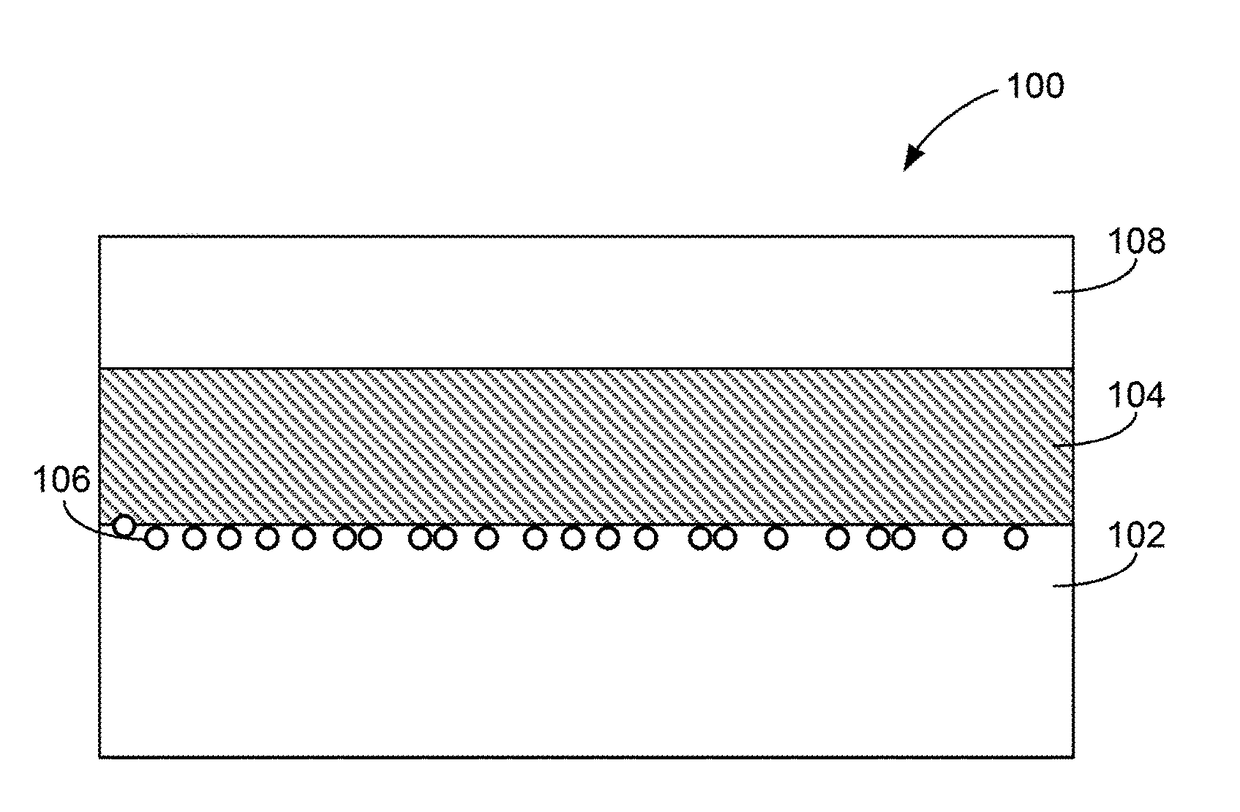High resistivity silicon-on-insulator substrate comprising a charge trapping layer formed by he-n2 co-implantation
a silicon-on-insulator substrate and high-resistance technology, which is applied in the direction of basic electric elements, semiconductor/solid-state device manufacturing, electric apparatus, etc., can solve the problems of wasting one of the substrates, not having suitable thickness uniformity, and time-consuming and costly methods
- Summary
- Abstract
- Description
- Claims
- Application Information
AI Technical Summary
Benefits of technology
Problems solved by technology
Method used
Image
Examples
Embodiment Construction
[0020]According to the present invention, a method is provided for preparing a semiconductor-on-insulator composite structure comprising a charge trapping layer (CTL). The present invention is further directed to a semiconductor-on-insulator composite structure comprising a charge trapping layer (CTL). In some embodiments, the semiconductor-on-insulator (e.g., silicon-on-insulator) comprises a high resistivity handle substrate prepared by He—N2 co-implantation and heat treatment to thereby form the charge trapping layer comprising a region of nanovoids. It has been discovered that a charge trapping layer prepared by He—N2 co-implantation and heat treatment, and thus having nanovoids, may suppress the parasitic conduction phenomenon in HR-SOI wafers for RF applications. Co-implantation of He and N2 followed by a heat treatment creates nanometer-size voids at the BOX / handle interface that are electrically activated deep level traps. He implantation followed by heat treatment causes He...
PUM
 Login to View More
Login to View More Abstract
Description
Claims
Application Information
 Login to View More
Login to View More - Generate Ideas
- Intellectual Property
- Life Sciences
- Materials
- Tech Scout
- Unparalleled Data Quality
- Higher Quality Content
- 60% Fewer Hallucinations
Browse by: Latest US Patents, China's latest patents, Technical Efficacy Thesaurus, Application Domain, Technology Topic, Popular Technical Reports.
© 2025 PatSnap. All rights reserved.Legal|Privacy policy|Modern Slavery Act Transparency Statement|Sitemap|About US| Contact US: help@patsnap.com



